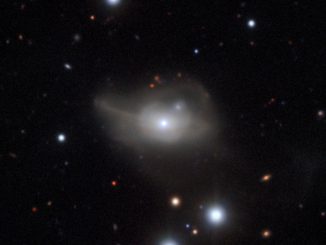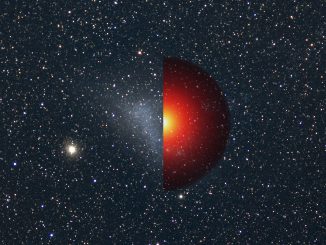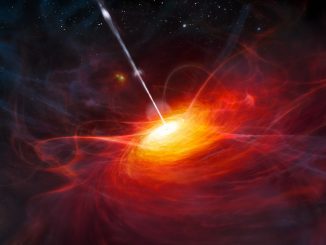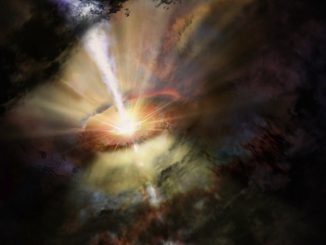
supermassive black hole


Flying observatory SOFIA expanding frontiers in solar system and beyond
NASA’s Stratospheric Observatory for Infrared Astronomy (SOFIA) is a Boeing 747SP jetliner modified to carry a 100-inch diameter telescope to study the universe at infrared wavelengths that cannot be detected from ground-based observatories. SOFIA’s Science Cycle 5, which runs from February 2017 through January 2018, spans the entire field of astronomy from planetary science to extragalactic investigations.

Starvation diet for supermassive black hole dims brilliant galaxy
Astronomers may have solved the mystery of the peculiar volatile behaviour of a supermassive black hole at the centre of a galaxy known as Markarian 1018 some 590 million light-years away. Combined data from NASA’s Chandra X-ray Observatory and other observatories suggest that the black hole is no longer being fed enough fuel to make its surroundings shine brightly.

Galactic merger exposes supermassive black hole
Astronomers using the super-sharp radio vision of the National Science Foundation’s Very Long Baseline Array (VLBA) have found the shredded remains of a galaxy that passed through a larger galaxy, leaving only the smaller galaxy’s nearly-naked supermassive black hole to emerge and speed away at more than 2,000 miles per second.

Starving black hole returns brilliant galaxy to the shadows
The mystery of a rare change in the behaviour of a supermassive black hole at the centre of a distant galaxy has been solved by an international team of astronomers using ESO’s Very Large Telescope along with the NASA/ESA Hubble Space Telescope and NASA’s Chandra X-ray Observatory. It seems that the black hole has fallen on hard times and is no longer being fed enough fuel to make its surroundings shine.

Fermi space telescope expands its search for dark matter
Dark matter, the mysterious substance that constitutes most of the material universe, remains as elusive as ever. Although experiments on the ground and in space have yet to find a trace of dark matter, six or more years of data from NASA’s Fermi Gamma-ray Space Telescope has broadened the mission’s dark matter hunt using some novel approaches.

Chance microlensing events enable astronomers to probe distant quasars
Some galaxies pump out vast amounts of energy from a very small volume of space, typically not much bigger than our own solar system. The cores of so-called active galactic nuclei (AGNs) can be billions of light-years away, so are difficult to study in any detail. However, natural gravitational ‘microlenses’ can provide a way to probe these objects.

Seeds of supermassive black holes could be revealed by gravitational waves
Gravitational waves captured by space-based detectors could help identify the origins of supermassive black holes, according to new computer simulations. Durham University’s Institute for Computational Cosmology ran the huge cosmological simulations that can be used to predict the rate at which gravitational waves caused by collisions between the monster black holes might be detected.

Supermassive black hole fed by cold intergalactic downpour
An international team of astronomers using the Atacama Large Millimetre/submillimetre Array (ALMA) has witnessed a cosmic weather event that has never been seen before — a cluster of towering intergalactic gas clouds raining in on the supermassive black hole at the centre of a huge galaxy one billion light-years from Earth.

Astronomers measure and model a blazing gamma-ray source
A blazar is a galaxy whose central supermassive black hole emits a powerful jet of high velocity particles aimed almost directly at Earth. Astronomers have measured and successfully modelled the very high energy gamma ray emission from a blazar known as 1ES 1741+196 using VERITAS, the Very Energetic Radiation Imaging Telescope Array System.
